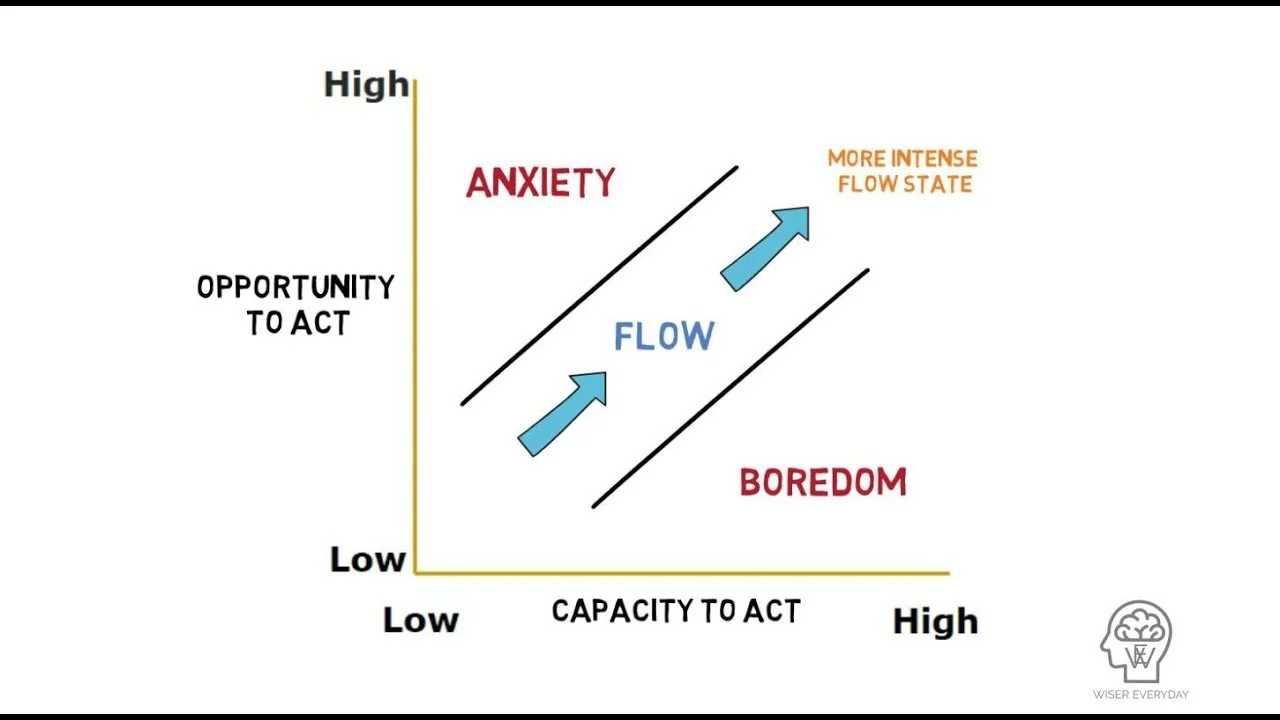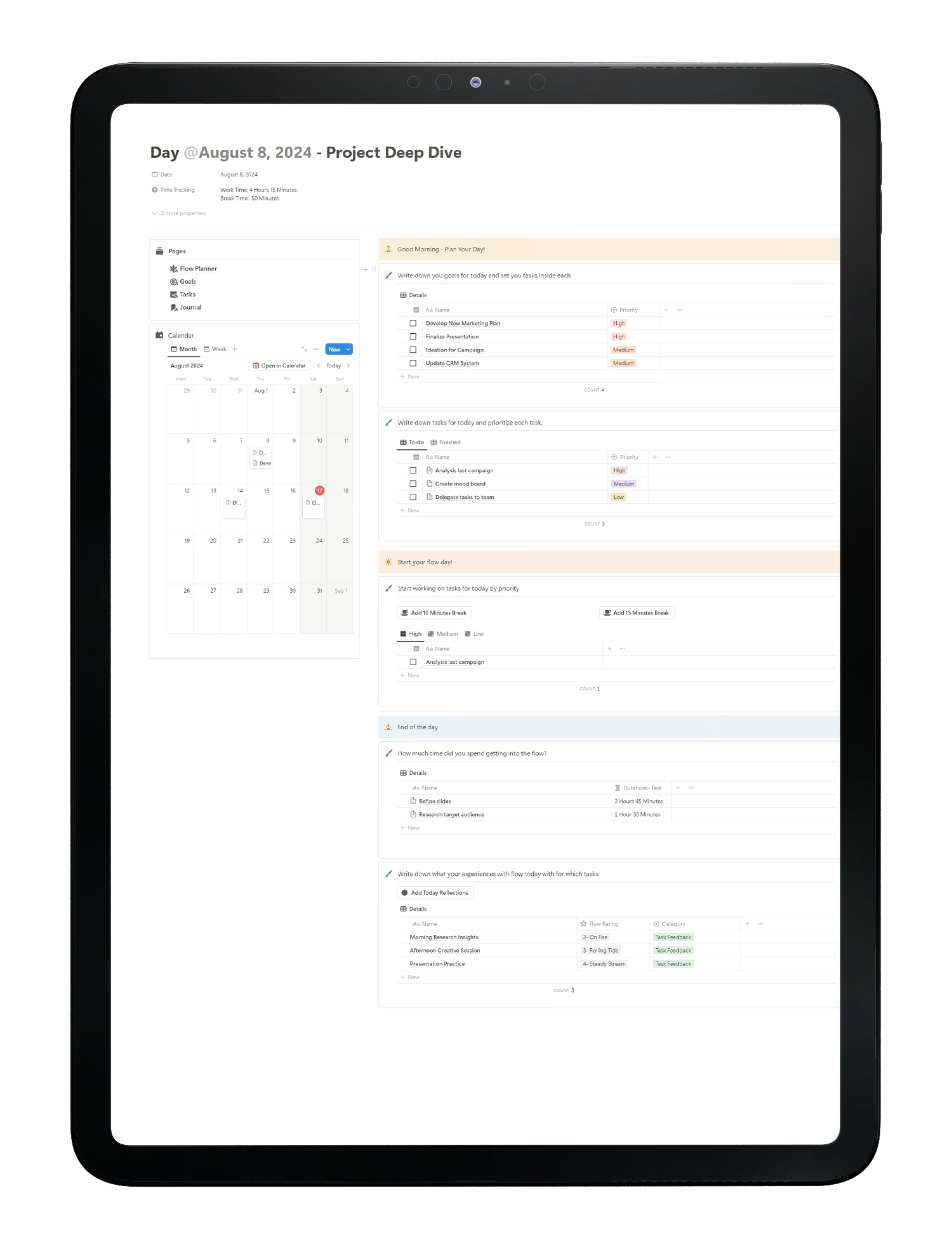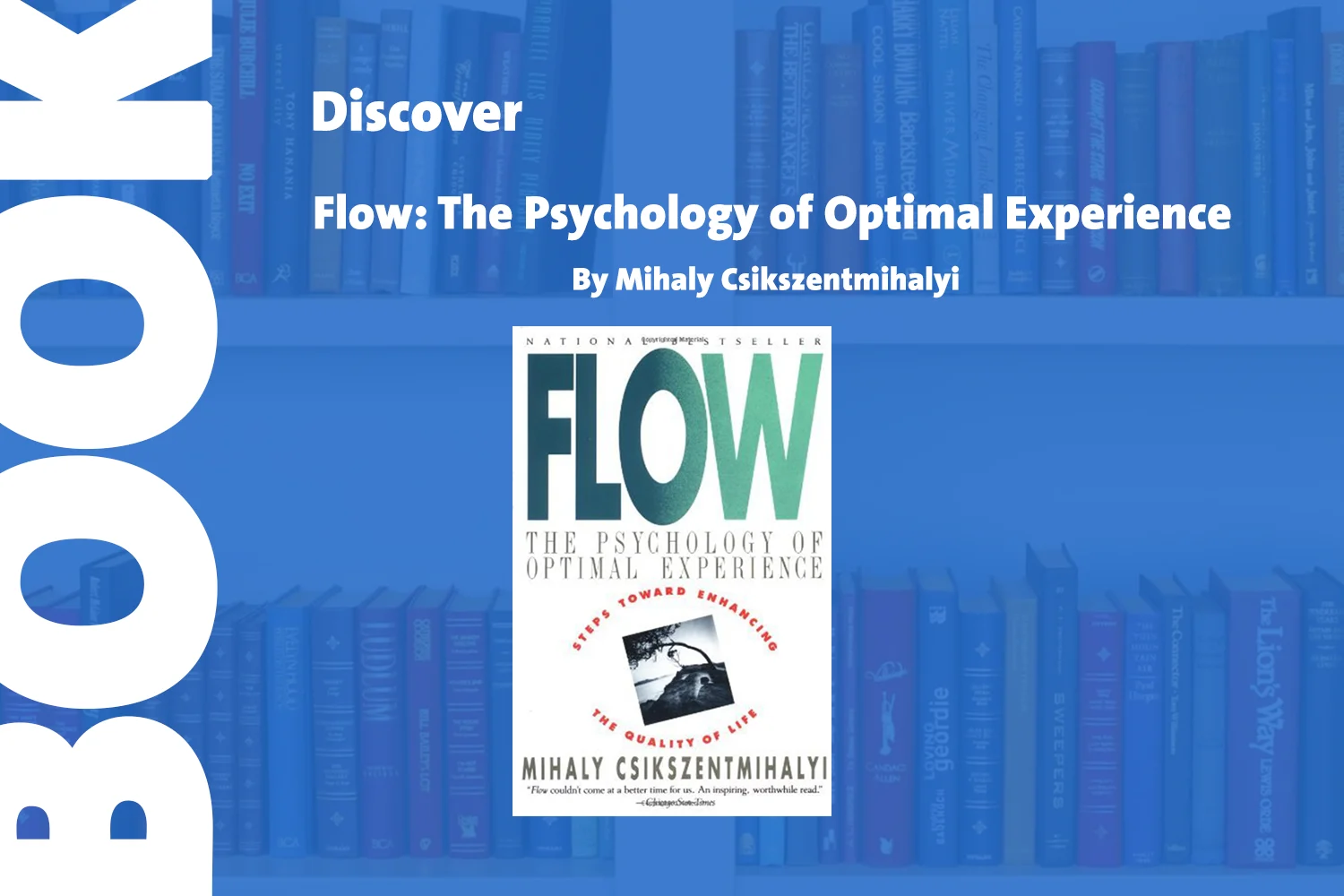Last updated on June 19th, 2025 at 11:27 am
In his groundbreaking book “Flow,” renowned psychologist Mihaly Csikszentmihalyi explores the concept of flow and its profound impact on personal and professional lives.
Flow refers to a state of complete absorption and focus in an activity, where individuals experience heightened concentration and enjoyment. By understanding and harnessing the power of flow, individuals can unlock their full potential and achieve optimal performance in various aspects of life.
What is Flow and How Does it Work?
Flow occurs when there is a perfect balance between the level of challenge presented by an activity and the individual’s skill level.
When the challenge is too low, individuals may become bored and disengaged. Conversely, if the challenge is too high, individuals may become anxious or overwhelmed.
Flow is found in that sweet spot where the challenge is just right for the individual’s skill level, allowing them to experience a state of deep focus and enjoyment.
the book explains that flow is not limited to specific environments or activities; it can be experienced in a wide range of pursuits.
From engaging in challenging sports or hobbies to creative endeavors like painting or playing a musical instrument, flow can be found in any activity that aligns with one’s abilities and interests.
Even everyday tasks like gardening or cooking can become opportunities for flow if approached with focus and a sense of enjoyment.
Examples of Flow in Action
To illustrate the concept of flow, the book provides numerous examples.
Athletes often experience flow during their performances, as they become fully immersed in the game or sport they are playing.
Artists can enter a state of flow while creating their artwork, losing track of time and becoming fully absorbed in their work. Musicians, surgeons, and individuals in various professions can also achieve flow when they are completely focused and engaged in their respective tasks.
Flow is not limited to individual pursuits; it can also be experienced in social interactions and relationships. Engaging in deep conversations, collaborative projects, or team sports can create a shared flow experience among individuals, fostering a sense of connection and shared purpose.
The Conditions for Flow
Csikszentmihalyi dedicates a chapter to identifying the optimal conditions required for experiencing flow.
He highlights the importance of clear goals, immediate feedback, and a sense of control in creating the conditions for flow. to setting clear goals, individuals provide themselves with a sense of direction and purpose.
Immediate feedback allows for continuous adjustment and improvement, while a sense of control empowers individuals to navigate challenges and make choices in line with their abilities.

How to apply the concept of flow in your daily routine?
To proceed, follow these steps:
1- Break Tasks into Manageable Chunks: Break down your tasks into smaller, manageable chunks. This not only helps you stay focused but also allows you to experience a sense of progress and accomplishment as you complete each task.
2- Eliminate Distractions: Create an environment that minimizes distractions. Turn off notifications on your phone, find a quiet space to work, and remove any unnecessary clutter that may divert your attention away from the task at hand.
3- Prioritize Flow-Inducing Activities: Actively seek out activities that align with your interests and passions. Engaging in activities that you genuinely enjoy and find challenging will increase the likelihood of entering a state of flow.
4- Maintain Focus and Concentration: Once you’ve identified your flow-inducing activities, make a conscious effort to fully immerse yourself in them. Stay fully present and focused on the task, allowing yourself to become absorbed in the activity.
5- Seek Immediate Feedback: Seek immediate feedback on your progress. This feedback can help you make adjustments and improvements, ensuring that you stay in a state of flow and continue to challenge yourself.
6- Find Joy in the Process: Embrace the process of each activity rather than solely focusing on the end result. Find joy and satisfaction in the journey, as this will contribute to a more enjoyable and fulfilling experience.
7- Take Breaks and Rest: It’s important to balance your flow-inducing activities with adequate rest and rejuvenation. Allow yourself to take breaks when needed and engage in activities that help you relax and recharge.
Flow in Work and Creativity
Flow, also known as being in the zone, is a psychological state that has a significant influence on productivity and creativity in the workplace. It is characterized by a deep sense of focus, motivation, and satisfaction in one’s work.
According to Csikszentmihalyi, a renowned psychologist, achieving flow requires striking the perfect balance between the difficulty of professional tasks and one’s skills, resulting in optimal performance and increased productivity.
Moreover, the benefits of flow extend beyond productivity. When individuals are in a state of flow, they become fully immersed in the creative process, allowing for enhanced creativity and the emergence of innovative ideas. By immersing oneself in their work, individuals can tap into their creative potential and explore new possibilities.
Therefore, fostering an environment that promotes flow is essential for organizations to unlock the full potential of their employees.
By providing challenging yet manageable tasks and encouraging a sense of autonomy, organizations can facilitate the flow experience, leading to higher levels of productivity, job satisfaction, and creative output.
Flow and Relationships
Flow not only enhances individual experiences but also has a transformative effect on relationships and social interactions.
When individuals are in a state of flow, they experience a deep sense of connection and engagement with others, which can lead to stronger bonds and increased empathy.
This heightened level of connection can result in more meaningful and fulfilling relationships, as individuals feel a greater sense of understanding and support from one another.
In a state of flow, individuals are more attuned to each other’s needs and perspectives, leading to clearer and more effective communication.
This enhanced communication fosters cooperation within a team, as individuals are motivated to help and support each other, contributing to a harmonious and productive work environment.
Teamwork in the flow
flow promotes teamwork and collaboration. When individuals are in a state of flow, they are more likely to work together effectively towards a common goal.
The shared experience of flow creates a sense of shared purpose and enjoyment, further strengthening the bond among team members.
This increased collaboration enhances creativity within the team, as the heightened focus and enjoyment experienced in a state of flow can lead to innovative ideas and solutions.
Flow not only benefits individuals but also strengthens relationships and enhances teamwork, communication, cooperation, and creativity.
By experiencing flow together, individuals can create a shared sense of purpose and enjoyment, leading to more meaningful and fulfilling relationships.
Moreover, the collaborative nature of flow fosters effective communication and cooperation within teams, enhancing productivity and creativity.
Flow has a transformative effect on relationships and social interactions, allowing individuals to connect deeply and work together towards shared goals.
When and How to Incorporate Flow into Your Life
Csikszentmihalyi, in his book “Flow: The Psychology of Optimal Experience,” provides practical strategies for incorporating flow into daily routines and activities.
One key strategy is actively seeking out opportunities for flow by engaging in challenging yet achievable tasks that push one’s skills to the limit.
By setting clear goals and breaking them down into smaller, manageable steps, individuals can create a sense of purpose and direction in their activities.
Another important aspect is finding activities that align with one’s interests and passions.
When we engage in activities that we truly enjoy and are passionate about, we are more likely to enter a state of flow. This can lead to a greater sense of joy, productivity, and satisfaction in our lives.
Creating an environment that supports focus and concentration is also crucial for experiencing flow.
This may involve eliminating distractions, such as turning off notifications on our devices or finding a quiet space to work.
Additionally, finding optimal conditions for flow, such as having the necessary resources and tools readily available, can further enhance the flow experience.
The Dark Side of Flow
While flow is associated with positive experiences and enhanced performance, Csikszentmihalyi acknowledges its potential drawbacks. Becoming too focused on flow at the expense of other aspects of life can lead to neglecting physical health, relationships, or other important responsibilities.
Additionally, constantly seeking intense flow experiences without allowing for adequate rest and recovery can result in burnout and diminished enjoyment.
Csikszentmihalyi emphasizes the importance of maintaining a balanced approach and being mindful of overall well-being when incorporating flow into one’s life.
Conclusion
“Flow” by Mihaly Csikszentmihalyi is a powerful guide to unlocking your full potential and achieving optimal performance in various aspects of life.
Understanding the concept of flow, its optimal conditions, and practical strategies for incorporating it into daily routines, individuals can experience increased happiness, fulfillment, and success.
Flow has the power to enhance productivity and creativity, foster meaningful relationships, and contribute to personal growth and well-being. By harnessing the transformative power of flow, individuals can truly unlock their full potential and lead more fulfilling lives.
The Flow planner – Notion template

I’ve created a Notion template inspired by the principles in this book, which has significantly enhanced my ability to stay in flow and achieve my tasks and goals more effectively.
If you’d like to experience the benefits of flow in your own work, feel free to try it out by clicking the button below. It’s completely free!


